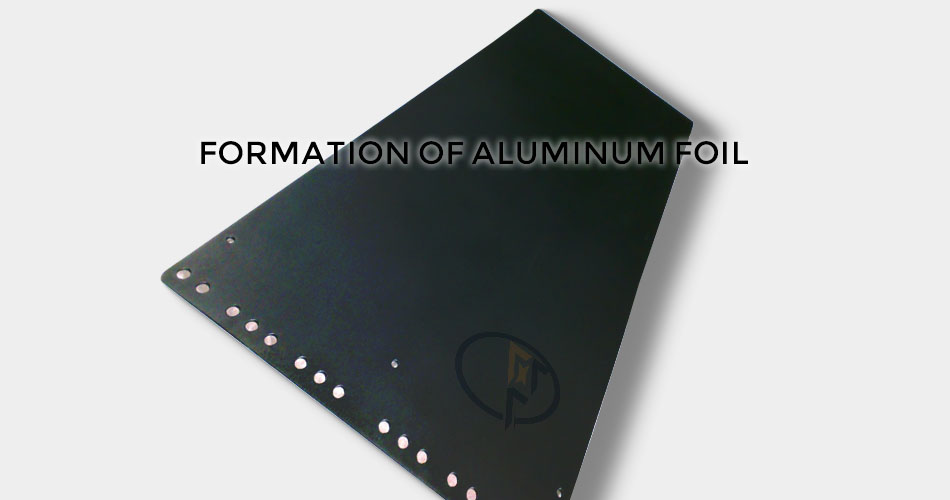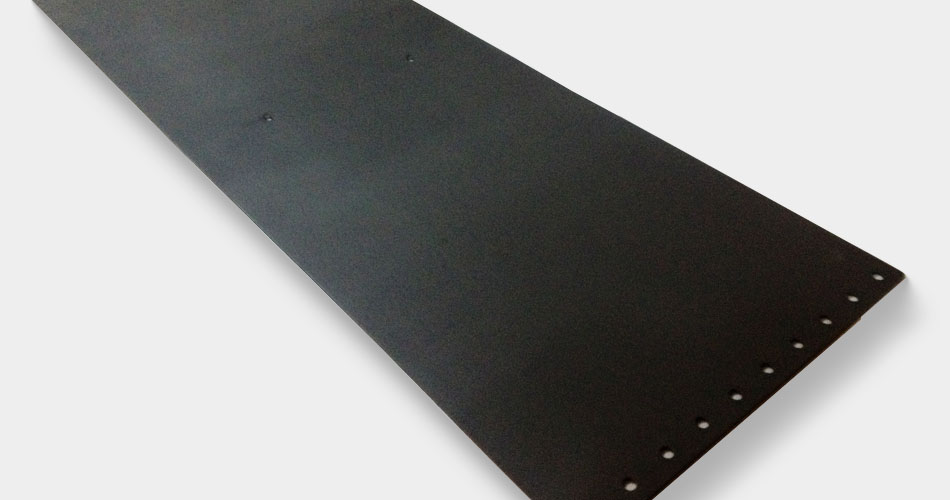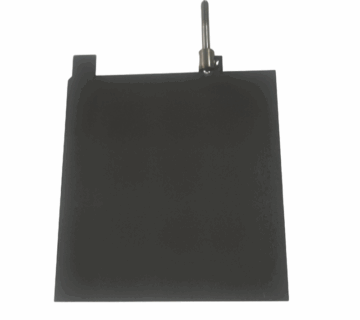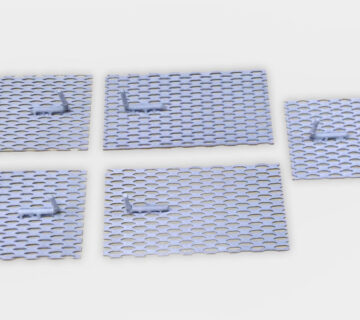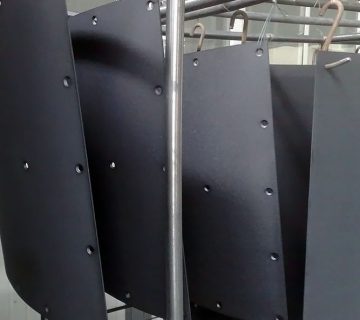The titanium anode for aluminum foil formation is the product obtained after the corroded aluminum foil undergoes electrochemical formation to form a layer of oxide film (aluminum oxide, Al₂O₃) on the surface.
In the direct current corrosion method, aluminum foil is used as the positive electrode of the power supply, and another conductor is used as the negative electrode of the power supply, and direct current is applied in electrolytes such as hydrochloric acid. Corrosion parameters such as appropriate current density, solution concentration, solution type and liquid temperature are selected. These parameters can be determined according to different requirements of corrosion pins. Therefore, this corrosion method is still widely used so far. Most anode aluminum foils for high voltage and flashlights use the direct current corrosion method.
Direct current corrosion is tunnel-type corrosion. Factors affecting tunnel corrosion include: the composition and temperature of the corrosive liquid, the electrocorrosion time, the polarization potential or current, the surface state and crystal structure of the aluminum pin. Among them, the polarization voltage or current, the CL-content of the corrosive liquid and the corrosion temperature have the greatest impact. The level of polarization potential has a significant impact on pit density, pit growth direction, growth rate and tunnel length. When the liquid temperature rises, the tunnel generation speed increases, and the tunnel width will become narrower.
Corrosion is essentially an electrochemical process. The factors that affect the corrosion of aluminum foil are internal factors related to the aluminum metal itself, such as the properties, composition, structure and surface state of aluminum, as well as the presence of mechanical deformation and internal stress; the second is external factors related to corrosion and the composition, concentration, liquid temperature of the corrosive liquid, the flow state of the corrosive liquid, and the magnitude and frequency of the applied current.
Aluminum foil formation system
- Boric acid-based formation solution.
The resistance of pure boric acid aqueous solution is extremely high, so the spark voltage during the formation of aluminum foil is also high. Therefore, pure boric acid-based formation is used to manufacture anode aluminum foil for high-voltage (450-500W) electrolytic capacitors.
When alkali and ammonium salts (such as ammonia water, borax, ammonium pentaborate, etc.) are added to the boric acid solution, the resistance decreases and the pH value increases. The decrease in resistance can reduce the power loss in the solution. However, if the alkali is excessive, a large amount of hydroxide will be generated and the properties of the oxide film will deteriorate. Therefore, the addition amount of alkali is preferably such that the solution does not become alkaline. At the same time, as the amount of alkali increases, the flashover voltage decreases. Therefore, the addition amount of alkali is limited by the formation voltage.
At present, boric acid series formation solutions are only used in higher voltage formation (about 200V or more). Although this formation solution can also be used in low-voltage formation, the formed capacity is smaller compared to formation solutions of other systems, so it is not used in low-voltage formation. - Adipic acid-based formation solution.
Organic acid molecules all possess a carboxyl group. The carboxyl group ionizes in water to generate H⁺ and exhibits acidity. Generally, organic acids are not strong acids, so almost all of them can be used for manufacturing formation solutions. There are many kinds of organic acids, and only adipic acid is the easiest to use. This acid is an extremely weak acid with two carboxyl groups and hardly reacts with aluminum and its oxides. Especially adipic acid neutralized to an appropriate pH value with ammonia water not only has a low resistivity coefficient but also does not react with aluminum and its oxides, and can be widely used as a formation solution.
For corroded aluminum foil formed by adipic acid system, under the same formation voltage, the capacity is generally higher than that of aluminum foil obtained by other formation solutions. The biggest characteristic of adipic acid system solution is its low resistivity coefficient. If the aluminum foil formed by adipic acid system solution is then put into a phosphoric acid system solution for final refined formation, good results can be obtained. - Phosphoric acid-based formation solution.
Phosphoric acid is more acidic than boric acid and is slightly corrosive to aluminum metal, so concentrated phosphoric acid is not suitable for use as a formation solution. However, ammonium dihydrogen phosphate solution obtained by neutralizing with alkali shows very superior effects in some aspects of formation. The aluminum metal hydroxide film and oxide film containing a small amount of phosphate ions have special stability for hydration. Generally, using phosphoric acid-based formation solution in the final process of formation will have better results.
Application of titanium anode in aluminum foil formation
- Good conductivity: The titanium anode can ensure the uniform distribution of current during the formation process and improve the efficiency of electrochemical reactions. This enables aluminum foil to be formed more quickly and shortens the production cycle.
High catalytic activity: The surface of the titanium anode has a special coating that can promote the progress of the formation reaction. This high catalytic activity can improve the speed and quality of formation and make the oxide film on the surface of aluminum foil more uniform and dense. - Enhancing corrosion resistance
During the formation process, aluminum foil will come into contact with corrosive electrolytes. The titanium anode itself has strong corrosion resistance and can remain stable in harsh environments and is not easily corroded. This not only extends the service life of the anode but also reduces the impact of impurities generated due to anode corrosion on the quality of the formed foil.
The corrosion resistance of the titanium anode can also ensure the stability of the formation process and avoid current fluctuations and voltage changes caused by anode corrosion, thereby improving the quality consistency of the formed foil. - Improving the quality of formed foil
Uniform current distribution: The titanium anode can make the current evenly distributed on the surface of aluminum foil, so that the thickness of the formed foil is more uniform. This is crucial for improving the performance of capacitors, because a uniform thickness can ensure that the capacitance and voltage resistance performance of capacitors are more stable.
Dense oxide film: The titanium anode promotes the formation of an oxide film on the surface of aluminum foil and makes it denser. This dense oxide film can improve the insulation performance and corrosion resistance of the formed foil and extend the service life of capacitors. - Reducing production costs
Long service life: Due to the good corrosion resistance and high catalytic activity of titanium anodes, their service life is longer than that of traditional anode materials. This reduces the frequency of anode replacement and lowers production costs.
Energy saving: The high conductivity and catalytic activity of titanium anodes can reduce energy consumption during the formation process. At the same time, its uniform current distribution can also reduce energy waste and further reduce production costs.




